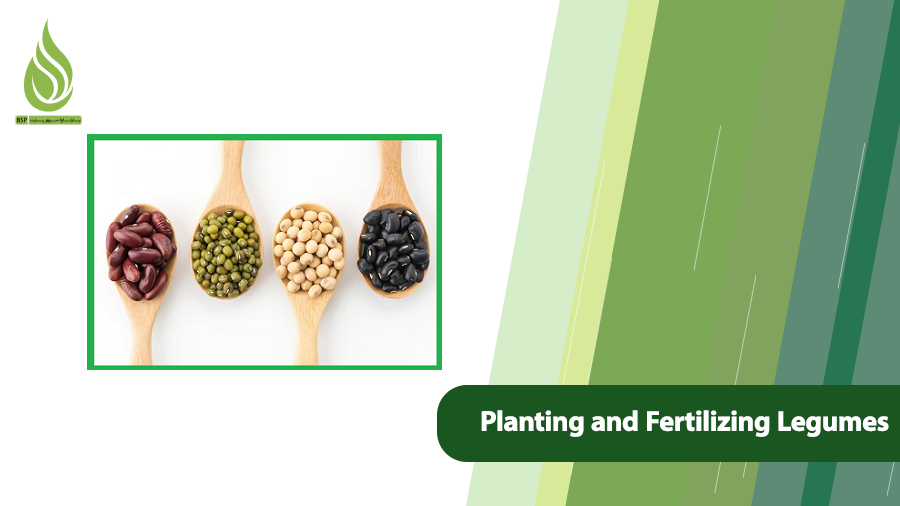
Planting and Fertilizing Legumes (From Sowing to Harvest)
Legumes are a special part of the agricultural products that people around the world rely on for their diets. With the rising demand for healthy and sustainable food, proper planning for planting and fertilizing legumes is more important than ever. In this article, we will go over the steps for planting and fertilizing legumes.
Benefits of Legumes and Their Role in Nutrition and the Economy
Legumes include seeds like chickpeas, beans, lentils, and fava beans, each grown in various types. They are known as one of the best sources of plant-based protein. Legumes are high in fiber, which helps improve digestive health, enhances the feeling of fullness, and reduces the risk of heart disease and type 2 diabetes. They are also a good source of B vitamins, iron, calcium, and other essential minerals vital for overall health.
Planting legumes helps fix nitrogen in the soil, which reduces the need for chemical fertilizers. This not only lowers production costs but also helps protect the environment. Additionally, proper fertilizing of legumes can further enhance soil health and improve crop yields.
By increasing domestic production of legumes, we can reduce reliance on imported food. Additionally, with more people seeking healthy plant-based options, legumes can be recognized as a valuable export product in global markets.
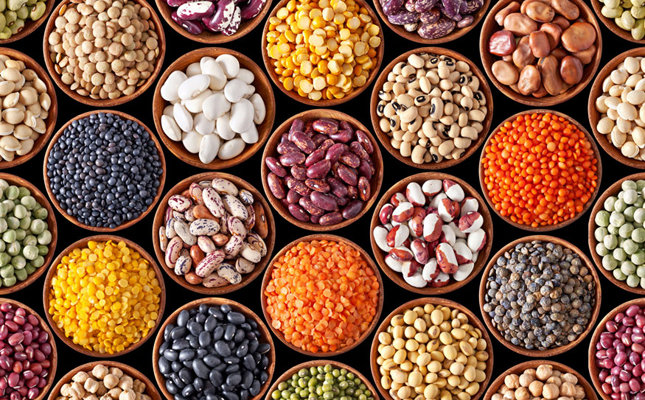
Choosing the Right Type of Legumes for Planting
Selecting the right type of legumes for planting is a key step in achieving agricultural success. Each type of legume has its own unique characteristics, needs, and benefits. Let’s compare a few popular legumes.
Chickpeas
- Climate Needs: Chickpeas thrive in moderate climates and require well-drained soil. They are fairly drought-tolerant and can grow in low-water conditions.
- Ideal Temperature: 15 to 25 degrees Celsius (chickpeas prefer moderate temperatures and typically stop growing if it gets above 30 degrees Celsius).
- Growth Duration: It takes about 90 to 120 days for chickpeas to grow.
Beans
- Climate Needs: Beans need a warm climate and rich, fertile soil. For optimal growth, the soil pH should be between 6 and 7.
- Ideal Temperature: 20 to 30 degrees Celsius (beans are heat-loving plants and do not grow well in temperatures below 15 degrees Celsius).
- Growth Duration: Beans take about 50 to 70 days to grow.
Lentils
- Climate Needs: Lentils prefer a moderate climate and well-drained, light soil. They are also quite drought-resistant.
- Ideal Temperature: 10 to 25 degrees Celsius (lentils prefer cooler temperatures and their yield decreases above 30 degrees Celsius).
- Growth Duration: Lentils take about 70 to 100 days to grow.
Fava Beans
- Climate Needs: Planting fava beans requires a cool climate and rich soil. They grow best in soil with a pH between 6.5 and 7.5.
- Ideal Temperature: 10 to 20 degrees Celsius (fava beans need cool to moderate temperatures and typically stop growing when temperatures rise above 25 degrees Celsius).
- Growth Duration: Fava beans take about 90 to 120 days to grow.
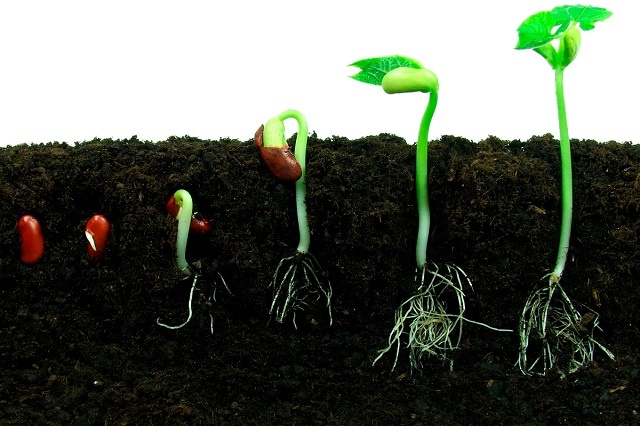
Essential Conditions for Planting Legumes
- Soil Type: Legumes thrive in rich, fertile soil. Soils that have enough organic matter can significantly enhance the growth of legumes. It’s important that the soil has good drainage so that excess water doesn’t accumulate. Too much water can lead to root rot and fungal diseases. Loamy soils, which have a good mix of sand, silt, and clay, are the best choice for planting legumes.
- Soil pH: Legumes generally grow best in soils with a pH between 6 and 7.5. Soils that are too acidic or too alkaline can hinder legume performance. Proper fertilizing legumes can help maintain the ideal pH level. You can determine the pH level by testing the soil, and if needed, you can adjust it using appropriate fertilizers.
- Moisture Levels: Legumes need adequate moisture in the soil, but it shouldn’t be overly wet. When watering, it’s crucial to avoid waterlogging and excessive moisture, as these conditions can lead to diseases and root rot.
- Adequate Sunlight: Legumes require sunlight to grow. Sufficient light boosts chlorophyll production, enhances photosynthesis, promotes root and seed growth, and improves the overall quality of the legumes. Ideally, they need about 6 to 8 hours of sunlight each day for optimal growth.
- Proper Irrigation: Irrigation is a key factor in the growth and cultivation of legumes. The water needs of each type of legume depend on climate conditions, soil type, and the plant’s growth stage. Among various legumes, fava beans require more water, while others need moderate irrigation without experiencing water stress. Typically, legumes are watered every 7 to 10 days, and drip irrigation is the best method as it delivers water directly to the roots and minimizes waste.
- Weed Control: Managing weeds is crucial for improving both the yield and quality of legumes. Weeds can compete for water, light, and nutrients, negatively impacting legume growth. Deep tilling before planting can eliminate existing weeds and bury their seeds deep in the soil. Additionally, rotating legumes with other crops can help control weeds. In the early growth stages, weeds can be removed manually or with specialized weeding equipment.
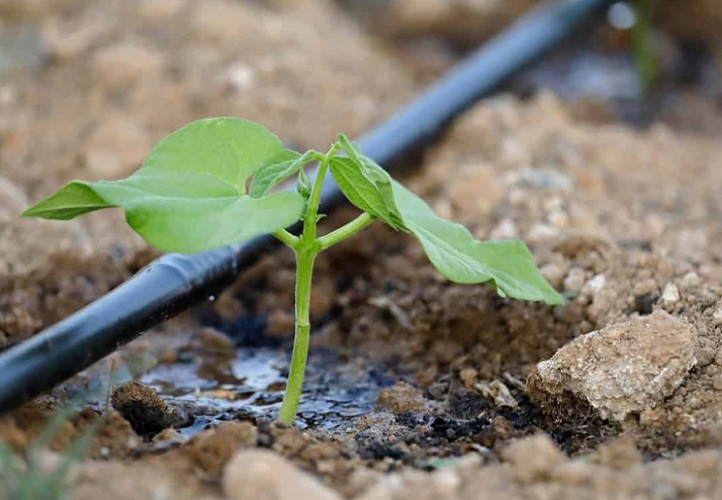
The Right Time for Planting Legumes
The timing for planting legumes depends on the climate conditions of the area. Here’s a general guide for when to plant different types of legumes:
Chickpeas
- Cold Regions: Late April to early May
- Moderate Regions: Early April to late May
- Warm Regions: Early March to early April
Beans
- Cold Regions: Mid to late May
- Moderate Regions: Early May to late June
- Warm Regions: Early March to early May
Lentils
- Cold Regions: Late April to early May
- Moderate Regions: Early April to late May
- Warm Regions: Early March to early April
Fava Beans
- Cold Regions: Early April to late May
- Moderate Regions: Early March to early April
- Warm Regions: Early March to early April
How to Plant Legumes
The process of planting legumes depends on the type of plant and environmental conditions; however, you can generally follow these steps for successful planting:
1. Soil Preparation
Before planting, it’s important to prepare the soil. This involves thoroughly tilling the ground to make the soil soft and well-aerated. During this stage, you should also remove any weeds and stones from the area. Additionally, enriching the soil through proper fertilizing legumes by adding organic and chemical fertilizers will ensure it has all the necessary nutrients for healthy plant growth.
2. Sowing Seeds
Once the soil is prepared and it’s the right time to plant, you can proceed with sowing the seeds. Make sure to maintain the appropriate spacing between seeds, which should generally be about 4 to 6 inches apart. The seeds should be planted at a depth of 1 to 2 inches. Planting them too deep can prevent them from germinating.
3. Watering
After planting, it’s crucial to provide initial watering to keep the soil moist. Be careful to water in a way that maintains moisture without causing water to pool on the surface.
4. Managing Weeds and Pests
Once the plants start to grow, regularly remove weeds to prevent competition for resources. It’s also essential to monitor for any signs of pests or diseases and manage them effectively throughout the growth stages.
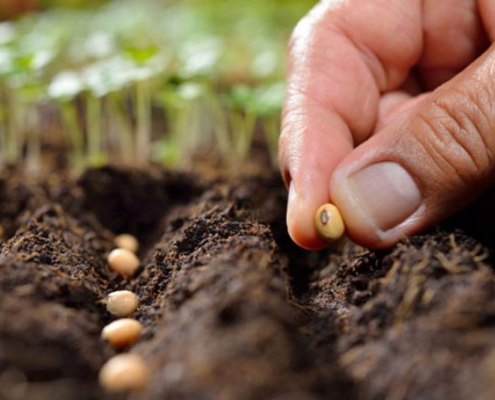
Another way to plant legumes is through a method called transplanting seedlings. In this approach, seeds are first planted in a controlled environment, such as a greenhouse. Once the seedlings have grown enough, they are then moved to the main field.
When the seedlings reach a suitable height and develop a few true leaves, they are ready to be transplanted. Care is taken to gently remove them from the soil and plant them at appropriate distances in the main field. After transplanting, it’s important to water the seedlings so that their roots can adjust to the new soil.
Program for Fertilizing Legumes
Legumes need the right nutrients for optimal growth, which typically include both macronutrients and micronutrients. Proper fertilizing of legumes is essential to ensure they receive these nutrients effectively. Here’s a breakdown of the types of fertilizers needed and how to create a fertilization plan for legumes.
1. Preparing the Soil Before Planting Legumes
Before planting seeds, it’s important to fertilize the soil during the preparation stage. At this point, fertilizers that contain nitrogen, phosphorus, potassium, and sulfur are commonly used. Nutrients can be provided to the soil through both organic and mineral fertilizers.
Organic Fertilizers
These include materials like cow manure, chicken manure, and compost, which help improve soil health and increase nutrient content.
Mineral Fertilizers
Depending on the soil’s needs, mineral fertilizers are applied. Here are some key types:
- Nitrogen Fertilizer: One of the best nitrogen fertilizers for soil preparation is ammonium sulfate. This fertilizer provides both nitrogen and sulfur, which are essential for early growth stages. It should be added to the soil during preparation to meet the nitrogen needs of the plants.
- Potassium Fertilizer: Potassium is another important nutrient that should be applied in specific amounts before planting. Potassium chloride is a good source of potassium, which helps improve seed quality and the plant’s resistance to environmental stresses.
- Phosphorus Fertilizer: Phosphorus is crucial for root development and flowering. Triple super phosphate is an excellent option for fertilizing.
Note: The exact amount of each fertilizer depends on the specific needs and deficiencies of the soil. To determine this, it’s essential to conduct a soil test before starting any work. A soil test will provide information about the levels of each nutrient as well as the soil’s pH, allowing you to create a fertilization plan based on the actual needs of your soil.
2. Fertilizing Legumes During the 4 to 6 Leaf Stage
During the 4 to 6 leaf stage of legumes, the plants are actively growing and require more nutrients. It’s crucial to provide sufficient nitrogen, phosphorus, and potassium at this stage.
Typically, balanced fertilizers, such as complete micronutrient fertilizers or NPK (nitrogen, phosphorus, potassium) blends, are used. At this point, the fertilizers are often applied as foliar sprays, meaning they are sprayed directly onto the leaves of the plants.
Using these fertilizers at the right time and in the correct amounts can significantly enhance the performance and quality of your legume crops. So, it’s important to pay attention to their nutrient needs during this growth phase!
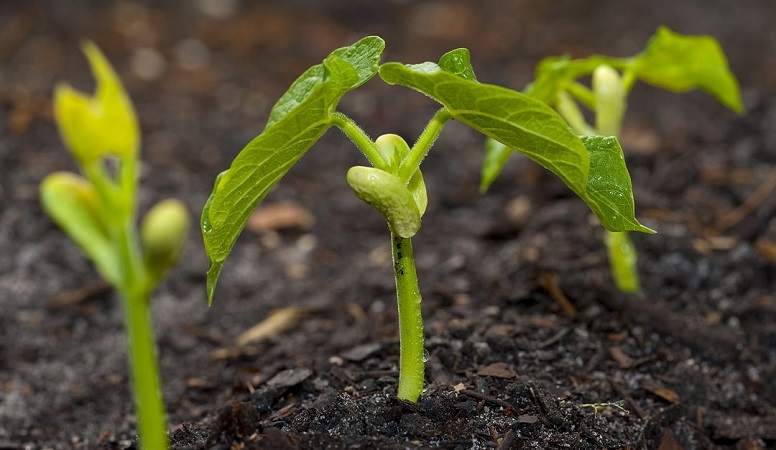
3. Before Flowering
At this stage, legumes need phosphorus. You can use fertilizers that contain phosphorus or opt for a high-phosphorus NPK fertilizer. Fertilization during this period is commonly done through foliar spraying, which means applying the fertilizer directly onto the leaves. Additionally, using amino acids can be beneficial at this time.
4. Fertilizing Legumes During Pod Formation
When the plants are forming pods, potassium becomes a crucial nutrient. You can use potassium-rich fertilizers or high-potassium NPK fertilizers for this purpose. During this stage, it’s also helpful to incorporate all micronutrients, as well as humic and fulvic acids. Fertilization can be done through both irrigation and foliar spraying.
5. Fertilizing Legumes During Seed Development and Pod Filling
At this stage, it’s essential to use potassium fertilizer. Potassium helps improve seed quality and enhances the plant’s resistance to environmental stresses. It’s also recommended to apply phosphorus during pod filling. Fertilization at this stage is typically done through foliar spraying.
When to Harvest Legumes
Knowing the right time to harvest legumes is very important. The best time to do this is when the pods turn brown or yellow. If the pods are still green, it means the plants haven’t fully matured yet.
You should also check the seeds inside the pods; they need to be completely dry and firm. When you squeeze the seeds, there should be no moisture. Additionally, the seeds should have reached their natural color and changed from their original shade.
If the pods break open easily and the seeds come out without any trouble, that’s a good sign that it’s time to harvest. Depending on the type of plant and farm conditions, farmers should choose the best harvesting method to ensure maximum efficiency. By paying attention to these signs, you can ensure a successful harvest!
Final Tips for Fertilizing Legumes
- Legumes, as leguminous plants, can increase nitrogen levels in the soil, but they need nitrogen sources during their early growth stages.
- The best times to fertilize are when the sun is at its lowest, which is usually early in the morning or during the evening.
- In saline and alkaline soils, you can use sulfur fertilizers and humic acid to lower the soil’s pH. The ideal pH range for growing legumes is between 6 and 7.5.
- When fertilizing legumes, keep in mind the fertilizer mixing law. It’s a good idea to use a complete micronutrient fertilizer to ensure that the soil gets all the necessary trace elements.